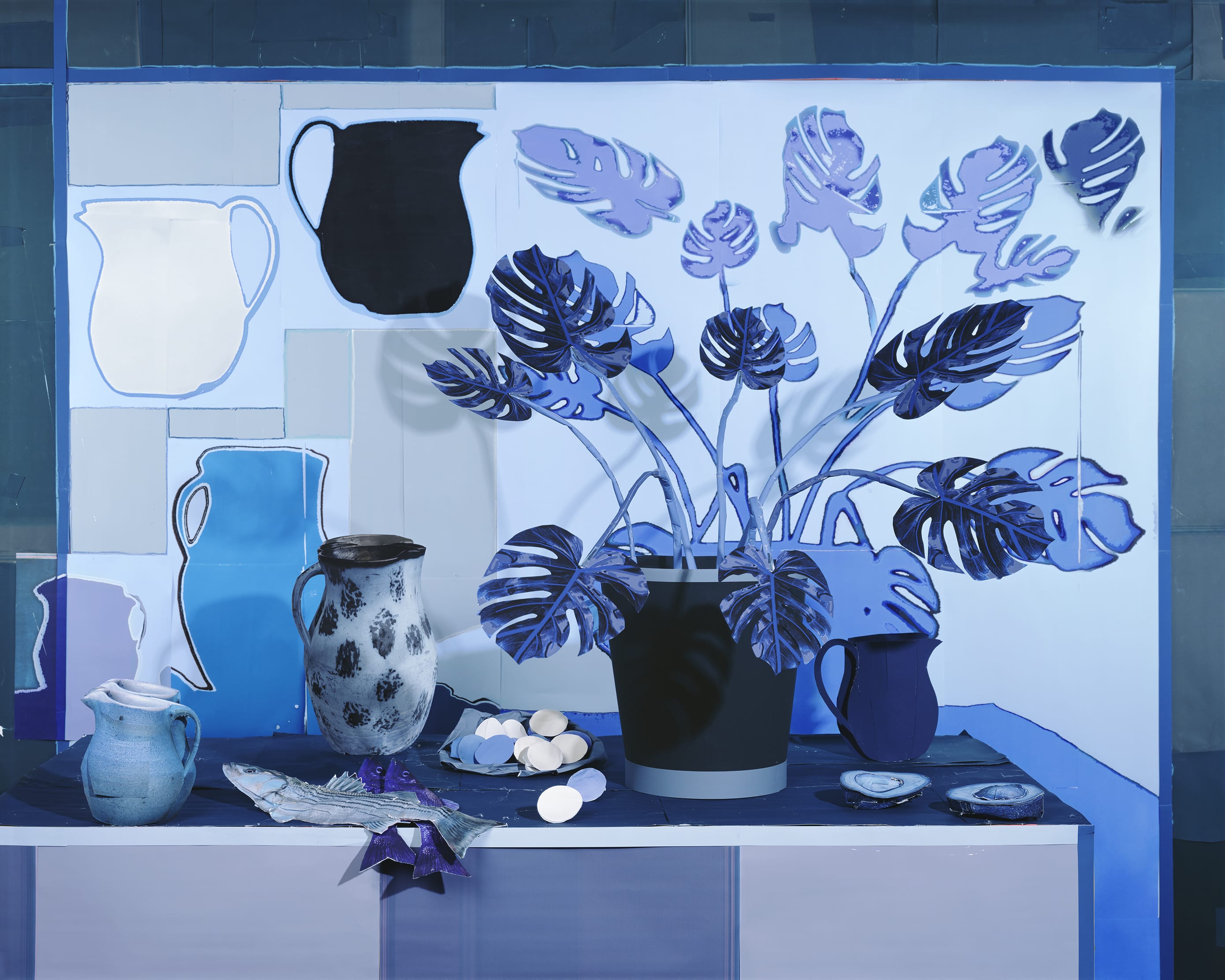Brooklyn based artist Daniel Gordon is having a moment: Since the early aughts, he and his work have gained a steady following among curators and collectors. He is known for his inventive creative process that toggles back and forth between digital and analog photography. Always redefining the medium of photography, his work defies simple categorization, occupying the interstices between image and object, between two and three dimensions, between beauty and the grotesque. In a recent exhibition last year, Blue Room at James Fuentes Gallery in New York City, Gordon’s printed images extended beyond their paper supports onto the gallery walls, transitioning into mural paintings. He is now creating a large outdoor sculpture constructed out of images printed onto aluminum sheets for the Rose Kennedy Greenway Conservancy in Boston, that will debut in 2021.
Born in Boston in 1980, Daniel Gordon was raised in San Francisco. He studied at Bard College, where he received a BA in Photography, before studying at Yale School of Art, where he earned his MFA. Gordon has exhibited widely in New York, Chicago, Los Angeles, San Francisco, Amsterdam, London, Paris, Basel, and Zurich. He has published several portfolios, and his work has been included in important exhibitions such as New Photography at The Museum of Modern Art (2009), Greater New York at MoMAPS1 (2010), Out of Focus at Saatchi Gallery (2012), and Cut! Paper Play in Contemporary Photography at the Getty Museum (2018). His exhibition, Hue and Saturate at the Houston Center of Photography is a Texas homecoming of sorts, as he started his career at the now-closed Angstrom Gallery in Dallas while still an undergraduate. We begin our phone interview on a hot July evening, during a heat wave that engulfs most of the continental United States, from the Gulf where I am in Houston through the Midwest and up along the Eastern seaboard to New York where he is.
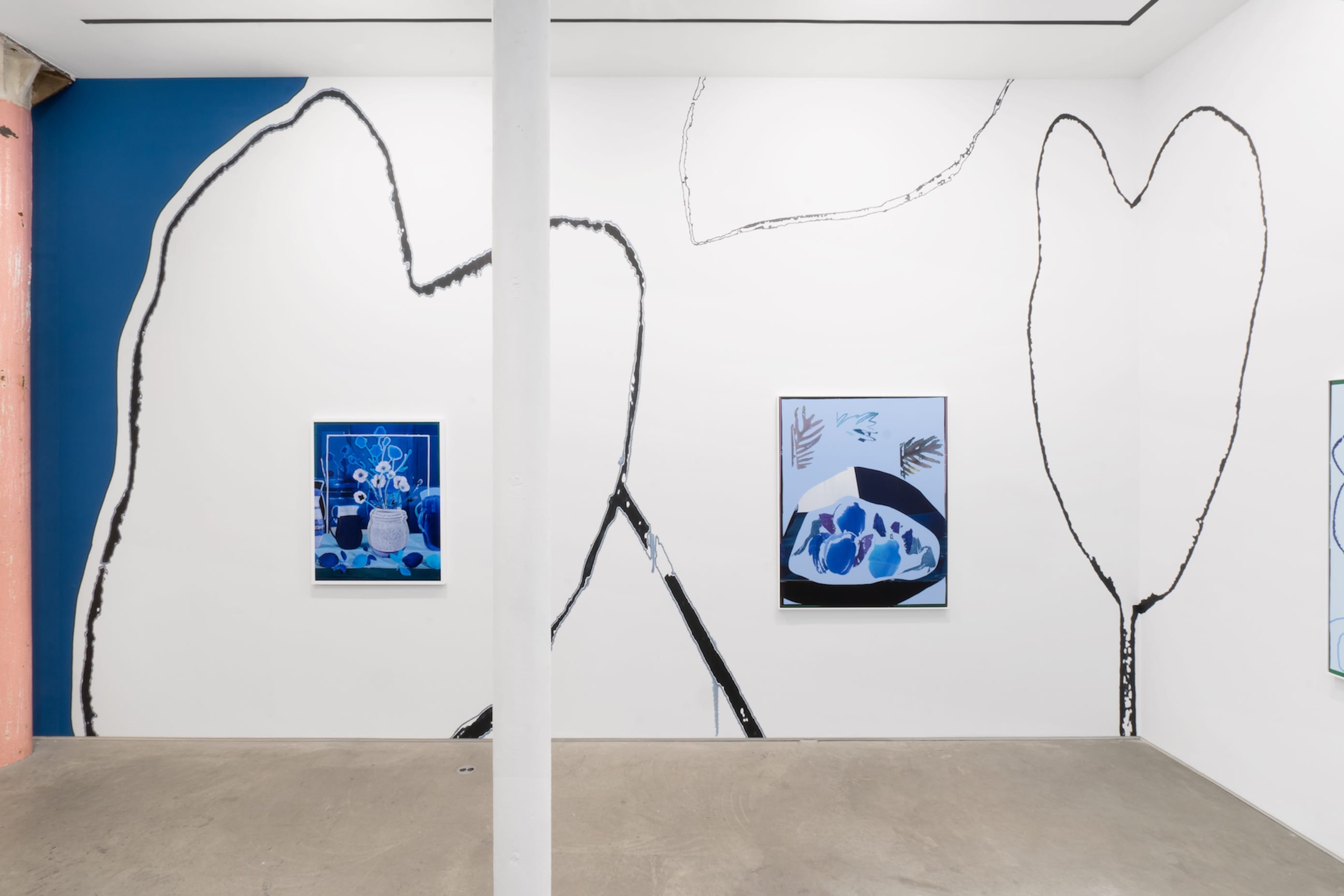
Irene Shum: It’s an exciting time for you. You have several projects actively underway, and you are soon be a father again! There seems to be a clear trajectory from your earliest series of Flying Pictures, which were straightforward unaltered images to your current work, images of collaged objects that were manipulated in Photoshop then photographed with a large format camera. For those who are new to your work, would you describe your working process and its evolution?
Daniel Gordon: The thing that initially drew me to photography was its innate ability to transform what was in front of the lens. I began making pictures of myself flying when I was a freshman at Bard College. I would set up my camera on a tripod, change into my flying outfit (long john pants), and run out onto the horizon line of the landscape ready to leap in the air with the wholehearted desire to achieve human flight. Sometimes photography made this desire a reality, and other times not—in other words these pictures were shot with film and were not manipulated in any way. This idea of utilizing the transformative quality inherent to photography is at the crux of what I was doing, and in many ways what I am still doing. The physicality of the Flying Pictures made it a young man’s game, and this performance was repeated over and over again throughout my college career on landscapes on both coasts, and with multiple cameras, but it ended with graduation.
At the same time, I was making these performance based Flying Pictures, I was also photographing objects that were constructed out of photographs. I would assemble them into a tableau, light them, and photograph them with a large format camera. This project is a different approach from that of the Flying Pictures—though in some ways, the interest aligned: a desire to allow photographs to transform reality. In this way, they settled somewhere between truth and fiction, the real and the imagined. I felt that if I was willing to go to great lengths, photography could enable me to do anything and make anything real.
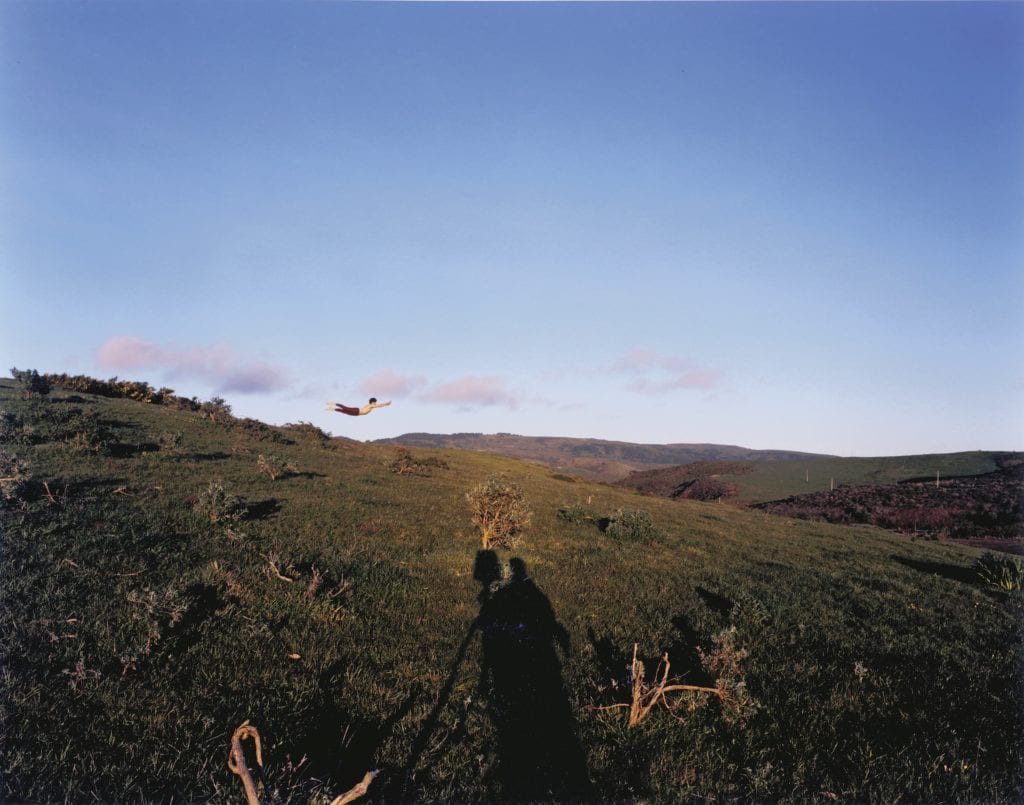
From there, my work has expanded in many ways, largely responding to technological advancements that, in my opinion, have brought photography, sculpture, and painting even closer together. The Internet is probably the biggest example of a tool that everyone uses, but Photoshop and inkjet printing, digital photography and camera phones, as well as dye sublimation printing directly onto aluminum have all changed the possibilities of what a photograph can physically be. This is the space I have been working in over the past several years—I’m making things that I never would have thought possible, and feel more freedom to take liberties within my visual vocabulary—which is very exciting.
IS: Your work seems to reference historical artworks and movements. The Flying Pictures strongly reminded me of Yves Klein’s famous photograph Leap into the Void by Harry Shunk and Janos Kender, while your series of still life images bring to mind Picasso’s early cubist collages. However, conceptually, your work is very different. Would you explain this? Is the history of image making part of your thinking? If so, how? If not, what were your influences? I know that you had mentioned in past interviews seeing photographs from your father’s surgery practice.
DG: I love so many different kinds of artwork, from many different historical periods—I think of the influence of this as a kind of soupy mixture. From Fauvism and Cubism to Pictures Generation, Surrealism, Constructivism, or Dutch Still Life—the list of influences is very long, both in historical periods as well as individual artists. I suppose the Yves Kelin reference is obvious in relation to my flying pictures—in fact, it’s the only artwork I have ever purchased. I love it and was also teasing against it when I was making the Flying Pictures. The Yves Klein piece is a composite print with two negatives sandwiched together, while my pictures used no darkroom manipulation. In other words, it was very important to me that my pictures were “straight” photographs shot on film and printed in the darkroom. I was making these right as Photoshop was being brought into the mainstream, and there was a pervasive sense of paranoia surrounding images being altered in this way. I wanted to create pictures that portrayed the truth in a way we all know to be impossible.
IS: I am fascinated how you work back and forth between two and three dimensions; and now, new printing technology allows your work to be photography and sculpture at the same time, that a photographic print can be both structural and spatial. How and when did you start exhibiting your paper constructions? Would you also tell us about your project in Boston?

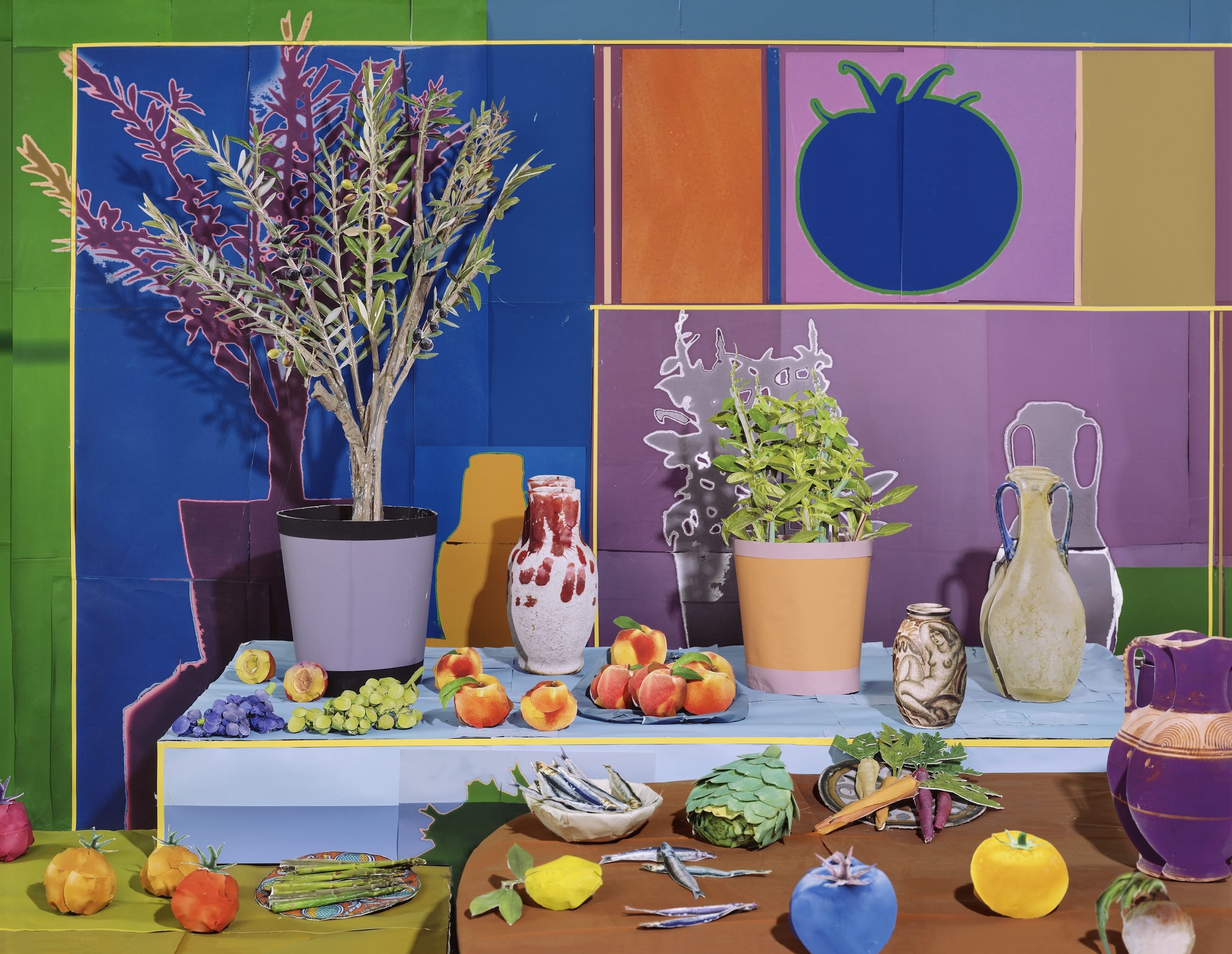
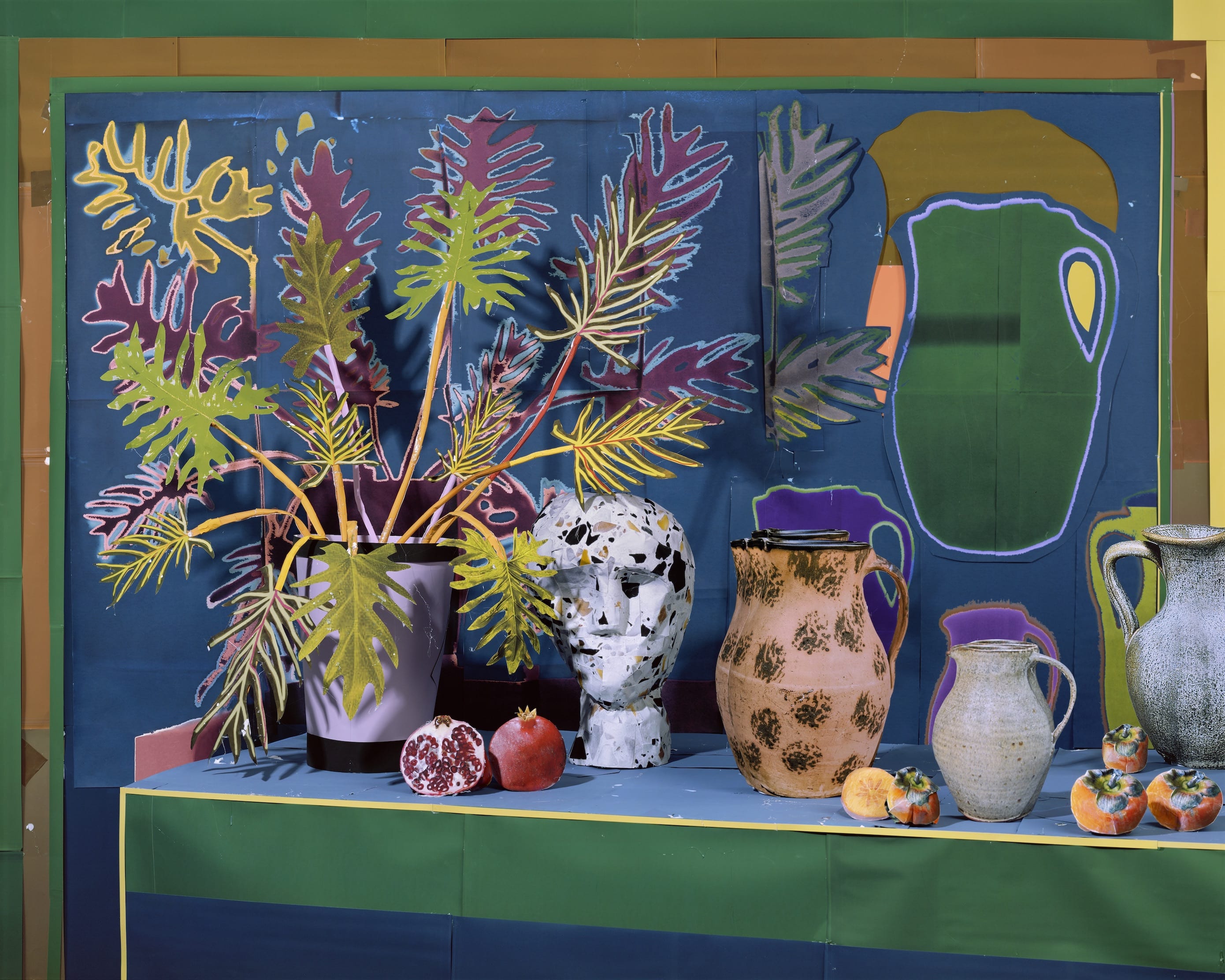
DG: I am definitely interested in the 2-dimensional to the 3-dimensional and back to 2-dimensional translation shifts within my photographs, or in other words, flat to sculpture and then back to flat, but I am also interested in a further transformation to a more deeply flattened space after the final photograph has been produced. I think of these works on canvas as inhabiting a more painterly space. I’ll be showing a group of these pictures alongside more traditional still life work this fall at the Houston Center for Photography, and I am thrilled to see all of this work in one place!
The upcoming project you are referring to is for the Rose Kennedy Greenway Conservancy in Boston, and although I am still very much in the beginning stages, it will be an attempt to blend multiple tentacles of my current practice: sculpture, photography, and painting. By printing directly onto aluminum, I will have the ability to create a 3-dimensional outdoor sculpture that uses photographic imagery, as well as abstracted elements that take on a painterly feel and deal primarily with form and color.
The idea for these works came from refining my paper sculptures over the years, as well as a desire to begin to show them publicly and play with scale. I have only done this a handful of times and each time was within a context that did not include any photographs. In this way, they can just be themselves as opposed to props within a photograph. I’m becoming interested in revealing the hidden elements. I wanted to show my hand—to expose the use of Photoshop, and the funny way of making my objects, not to mention a desire to create mural sized works that go directly on the wall within an architectural space—this all came directly from process. It took me a long time to be okay with letting people in on this aspect of my work. I think because everyone started with my Flying Pictures, which acted as a kind of magic trick, it took a long time to come around to being more interested in revealing rather than concealing.
IS: On a personal level, I love your portraits of your spouse, artist Ruby Sky Stiler. Not only is she sometimes the subject of your work, but she provides constructive criticism and feedback. Would you talk about how you met and how that dynamic advances your work?
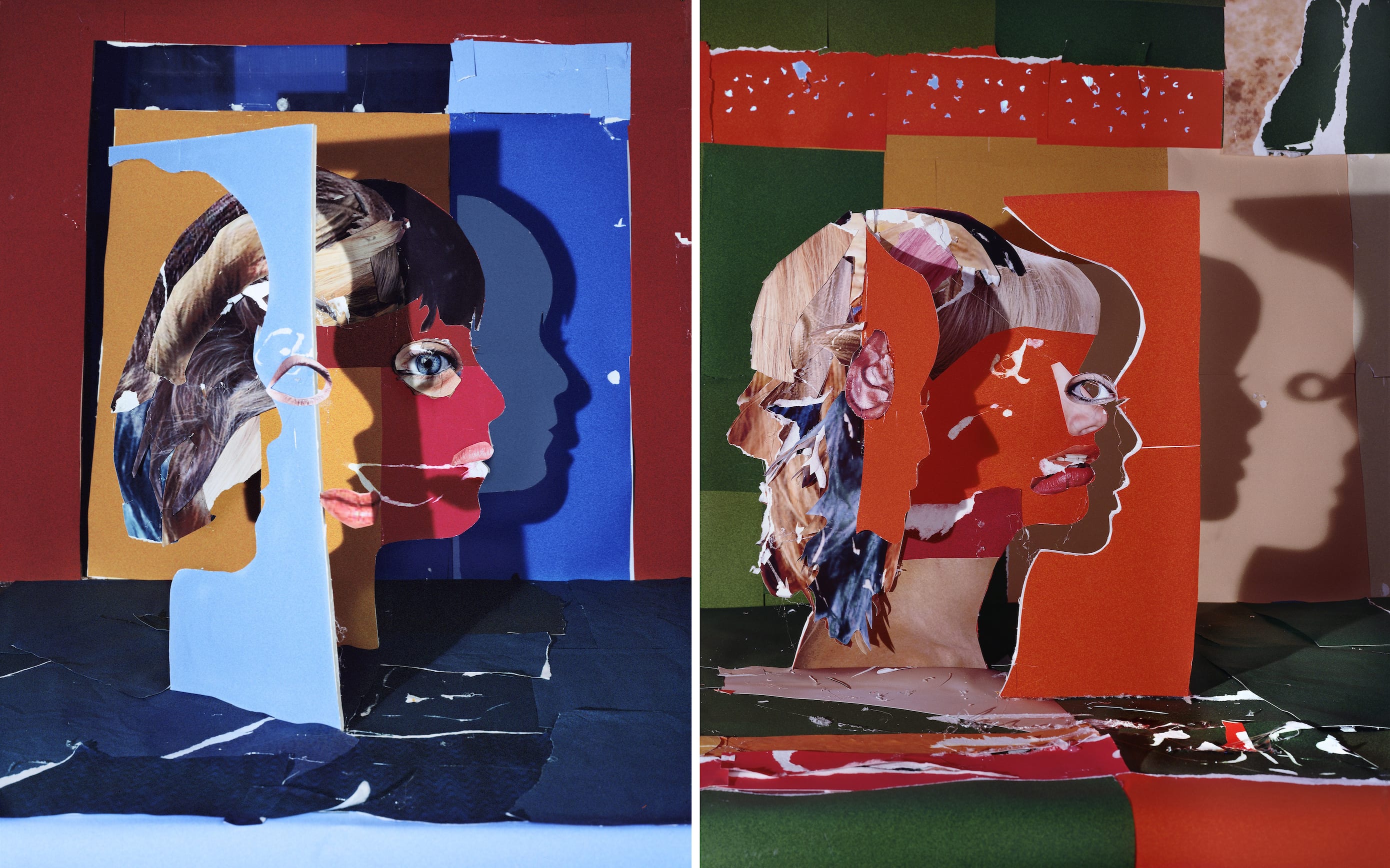
DG: Thank you! Yes, she is often the subject of my work and I always enjoy making her portrait, but you are right, she is also my most important critic and champion. I think we help each other learn about what we are doing and what we want to be doing. We met in graduate school at Yale and have been together since the first day we spoke in 2004. We recently moved our studios into our home and are getting used to this art/life connectedness. The transition from work to home and vice-versa has been more fluid, and I am very interested to see how this changes each of our practices and work. Practically speaking, it helps us both be productive while having a family with young kids.
IS: Although I don’t mean for this to become a love fest, I do also love your early project Thirty-One Days, that cleverly invites the viewer into your creative process by asking them to use an app that finds and collages images from the internet then print and assemble a book on their own. Would you share the impetus of that project?
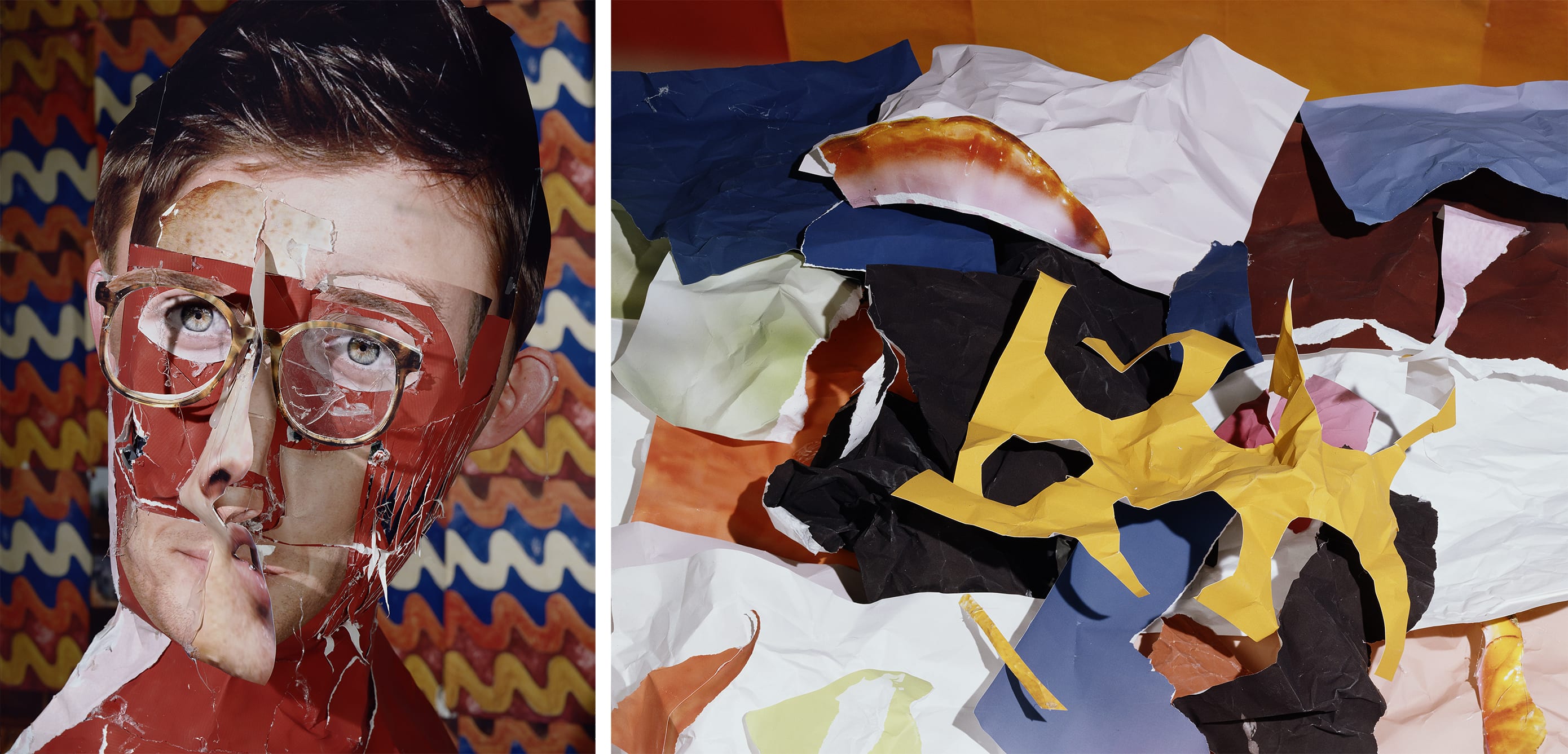
DG: It began with the simple framework of making one picture every day for a month. This was July of 2010. I felt at the time that I needed to push through to discover what my next work would be, so I set this assignment up for myself. This kind of a project was, and continues to be, a fruitful challenge for me. I often discover new ideas for pictures. Once the pictures were complete, I thought it would be interesting to find a way to allow any user to use a similar process of downloading, printing, and constructing, to complete a book of these pictures. I worked with a really talented team, Jiminie Ha and Ryland Wharton, a designer and Artist/Programmer respectively, to help to make it a reality. The publication continues to live online, and in the physical world should a viewer have the desire, and the time.
IS: Lastly, how does it feel to return to Texas? I know it is still a little in flux, but would you discuss your exhibition plans for the Houston Center of Photography?
DG: It feels great! I guess a good place to start would be the title: Hue and Saturate. This is a Photoshop tool that does exactly what it sounds like—changes the hue and levels of saturation—though I think this title can have multiple meanings and connections both to the real world and the online world. It felt apt, as the show is separated into a blue room and a “full chroma” room, with painted walls corresponding to the works in each room.

